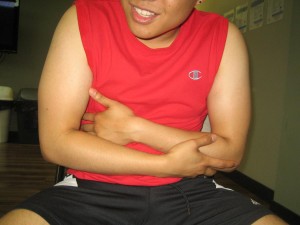Always bear in mind that abdominal wounds can occur from trauma or surgical procedures to the region right below the rib cage up all the way to the pelvic bone. An abdominal wound is considered serious once the sterile cavity of the peritoneum opens up to the skin area. The peritoneal cavity includes the area around the stomach, intestines and the liver.
Depending on the type of abdominal wound sustained by the individual, it is vital that you are prepared to provide the appropriate measures. In doing so, you can help prevent further damage until the individual can be treated by the emergency medical team or at the nearest hospital.
Abdominal wounds due to trauma
In case the intestines protrude via the abdominal wall, the intestines should be covered with a clean dry cloth or sterile gauze. As much as possible, avoid touching the exposed intestines or taking away any foreign bodies present in the wound to prevent further bleeding or damage to the area. Individuals with this injury should be transported to by the emergency medical team as soon as possible.
Depending on the injury of the individual, it is vital to seek immediate medical care if there is severe bleeding so that proper care can be started.

Abdominal wounds due to surgeries
A well taken for wound bed shows satisfactory supply of blood to the area, shows steadiness of the wound bed with the help of stitches, tape or staples in place and has minimal or no drainage. The wounds after surgical procedures typically comply with these criteria for a healthy wound bed.
An individual with an abdominal wound should not be given any food or beverage unless allowed by the doctor. Once the individual can ingest food, the specific intake of food is required to promote the healing of the wound.
Complex open abdominal wounds
The wounds that involve perforation of the intestines or rupture of the abdominal aorta can lead to an emergency medical scenario that entails immediate medical care. It is vital to seek emergency medical attention as quickly as possible.
Complications of abdominal wounds
In case complications occur, they typically manifest within 3 weeks of the wound appearance. Remember that bleeding is a major complication within the initial 48 hours after surgery. Infection usually follows bleeding as the next complication that disrupts with the process of healing.
Another complication is dehiscence which is known to occur less frequently but when it does, it increases the mortality rate. It is important to note that dehiscence is a process in which the wound breaks open and exposes the bowel. The complications should be dealt with before the organized process of healing can take place.
Factors that impede wound healing
The major factors that delay the process of healing often include cigarette smoking, chemotherapeutic agents, diabetes, corticosteroids, malnutrition and jaundice.
